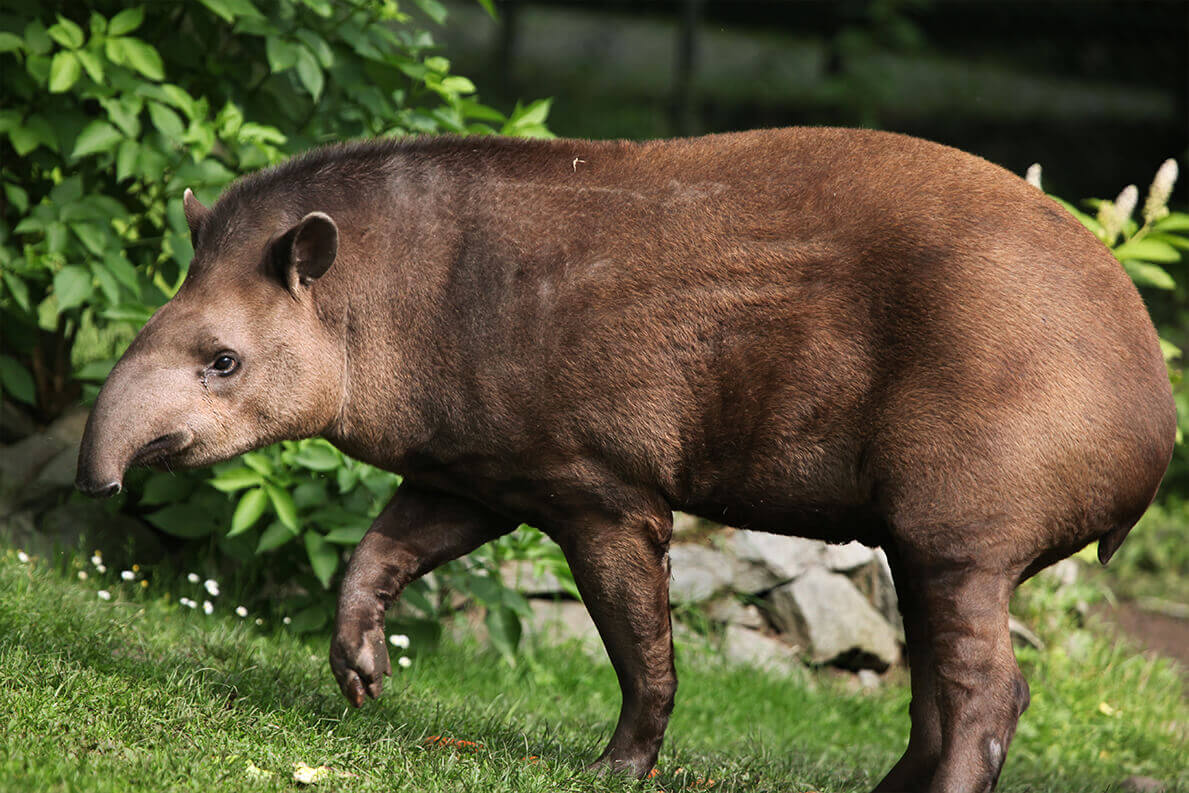Discover the Fascinating World of Tapirs: Nature’s Survivors
The tapir is a fascinating mammal with a prehistoric lineage that has survived for millions of years. Known for its distinctive trunk-like snout, the tapir is often called a “living fossil.” This article will delve into its scientific classification, physical characteristics, habitat, behavior, diet, reproduction, predators, conservation status, and evolutionary history while also examining its unique relationship with humans.
Contents
Scientific Classification
- Kingdom: Animalia
- Phylum: Chordata
- Class: Mammalia
- Order: Perissodactyla
- Family: Tapiridae
- Genus: Tapirus
There are four recognized species of tapirs:
- Baird’s Tapir (Tapirus bairdii)
- Malayan Tapir (Tapirus indicus)
- Mountain Tapir (Tapirus pinchaque)
- Brazilian Tapir (Tapirus terrestris)
Physical Characteristics

Tapirs are large, herbivorous mammals with stout bodies and a unique beak, as well as an elongated, flexible upper lip resembling a short trunk.
- Size: Tapirs can grow between 1.8 and 2.5 meters (6 to 8 feet) in length and weigh anywhere between 150 to 300 kg (330 to 660 lbs), depending on the species.
- Color: Their coat colors vary by species, with the Malayan Tapir sporting a striking black-and-white pattern, while other species are typically dark brown or gray.
- Snout: Their prehensile snout is used for foraging, similar to a short elephant trunk, allowing them to grasp leaves and fruit from higher branches.
Tapirs have a stocky, barrel-shaped body, helping them move through dense forest vegetation, and their hooved feet (three toes on the hind feet, four on the front) assist them in walking on muddy or soft terrain.
Habitat
Tapirs are typically found in tropical and subtropical forests, wetlands, and grasslands. Their habitats are largely concentrated in the following:
- Central and South America: Baird’s Tapir and Brazilian Tapir.
- Southeast Asia: Malayan Tapir.
- Andean Mountain Range: Mountain Tapir.
They depend highly on water sources, such as rivers and lakes, as they often use water to cool off, escape predators, and find food.
Behavior

Tapirs are shy, primarily nocturnal animals, meaning they are most active at night and during twilight hours. They are solitary by nature, only coming together for mating or when a mother is raising her young.
- Swimming: Tapirs are excellent swimmers and often spend time in the water to cool down and evade predators.
- Communication: Tapirs communicate using high-pitched whistles and squeaks, which can be heard in dense forest areas with low visibility.
Diet
Tapirs are herbivores whose diet primarily consists of fruits, leaves, twigs, aquatic plants, and other vegetation. Their prehensile snout helps them pull down branches and pick fruits from trees. They also play a crucial role in seed dispersal, as seeds pass through their digestive system and are deposited in other areas, contributing to forest regeneration.
Reproduction
Tapirs have a slow reproductive rate. Females give birth to a single calf after a gestation period of about 13 months. Newborn tapirs are easily recognizable by their coat of white and brown stripes and spots, which help camouflage them in the forest undergrowth. These markings fade as the calf matures.
- Maturity: Tapirs reach sexual maturity between 3 to 5 years of age.
- Lifespan: They can live up to 25 to 30 years in the wild and longer in captivity.
Predators and Threats
Adult tapirs face few natural predators as large herbivores, but jaguars, pumas, and crocodiles may hunt them, particularly near water. Young tapirs are more vulnerable and can fall prey to these same predators, along with large birds of prey.
However, the biggest threat to tapirs is human activity. Deforestation, habitat destruction, illegal hunting, and road accidents have significantly declined tapir populations. Human encroachment into their natural habitats poses the most critical threat to survival.
Conservation Status
All four species of tapir are listed as vulnerable or endangered by the International Union for Conservation of Nature (IUCN):
- Baird’s Tapir and Mountain Tapir are endangered due to habitat loss and poaching.
- Malayan Tapir is also endangered and faces threats from deforestation in Southeast Asia.
- Brazilian Tapir is vulnerable but is the least threatened of the four species.
Conservation efforts include habitat protection, anti-poaching laws, and research programs to understand their ecological importance and promote conservation.
Interesting Facts
- Ancient Lineage: Tapirs have changed very little over the past 35 million years. They belong to the Perissodactyla order, which includes horses and rhinos, making them some of the most ancient mammals on Earth.
- Water-Lovers: Tapirs use rivers for swimming and as pathways to move through dense forests.
- Seed Dispersers: Tapirs are crucial for seed dispersal in their ecosystems. Many plant species rely on them to spread to spread their seeds across large forest areas.
Evolutionary History
Tapirs are part of the Perissodactyla order, an ancient group of odd-toed ungulates that includes horses and rhinoceroses. They evolved in North America during the Eocene epoch, around 55 million years ago. Tapirs once had a much wider distribution in Europe and North America. Fossil evidence indicates that they have changed little over millions of years, retaining their primitive features.
Relationship with Humans
In various cultures, tapirs hold symbolic significance. In South American indigenous folklore, the tapir is often depicted as a spiritual guide or symbol of strength. In modern times, conservationists have promoted the tapir as a “flagship species” to raise awareness about preserving tropical forests and biodiversity.
Despite their gentle nature, tapirs can be unpredictable, and when threatened, they may defend themselves with surprising aggression, especially toward humans nearby. This has led to occasional conflicts with people living near their habitats, though such incidents are rare.
Conclusion
The tapir is a remarkable animal that has survived for millions of years, largely unchanged from its prehistoric ancestors. Its role in maintaining the health of tropical ecosystems, combined with its unique physical characteristics, makes it an animal of considerable importance. However, human activity threatens the survival of these magnificent creatures. Protecting their habitats and raising awareness of their ecological role is crucial for ensuring that tapirs continue to thrive for future generations. Through continued conservation efforts, there is hope for these ancient survivors.
- Golden Retriever Pros and Cons: What Every Pet Parent Should Know - 15 September 2025
- Cane Corso Dog Breed: Health, Care, and Lifespan - 14 September 2025
- Catahoula Leopard Dogs: Description, Temperament, Lifespan, & Facts - 21 July 2025







